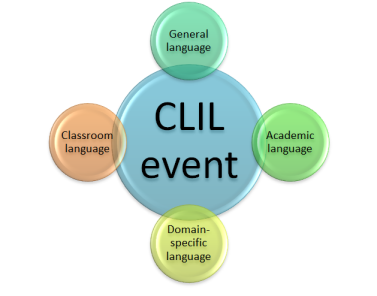With the expansion of the European Union, the need for communication and the diversity of new languages are seen as central issues. In the last years, English has become the world’s main language, but this doesn’t mean other languages will be likely to disappear. With all this, the need of acquiring communicative skills in a second or third language will be increased as well. This multilingualism is becoming very important and for it teachers are looking for ways to encourage language learning and promoting high levels in foreign languages.
CLIL will help students become academically proficient in foreign languages, increasing their cultural knowledge and motivating them to be able to speak about interesting topics, as well as preparing them for work and further study.

The basis of this method is to teach school subjects in a language that is not the mother tongue of the learners. Using this method, knowledge of the language will become the system of learning the taught content, and at the same time when learners get interested in a specific topic they will feel motivated to obtain that language in order to be able to communicate. 
This has several advantages. First of all, it helps children get to know a culture that is different from their own and makes them more international. In addition, when they study a subject in a foreign language, they learn how to use it in normal situations but they also improve their specific vocabulary. This is important for their future, because it gives them skills that will be very useful for their career.Apart from this, it will make children more tolerant towards other traditions and identities. In the integration of content and language, interests, needs and the level of students has an important role.
In conclusion, the main difference of CLIL from other education system is that the language teacher is also the subject teacher, so he is able to work out opportunities for developing language skills. Also I have to mention that is an educational system is so beneficial, because while you are studying essential subjects you are also improving your language level.
Finally I leave here a video so that you have a closer look on this new teaching method. Here David Marsh gives a great insight into CLIL, answering relevant questions about advices on how to start up a CLIL programme.
- Steve Darn. (2006a). Content and Language Integrated Learning. 20 January. Retrieved from http://www.teachingenglish.org.uk/articles/content-language-integrated-learning
- Steve Darn. (2006b). CLIL: A lesson framework. 31 January. Retrieved from http://www.teachingenglish.org.uk/articles/clil-a-lesson-framework
- http://www.youtube.com/watch?v=-Czdg8-6mJA
Filed under: Languages
![]()